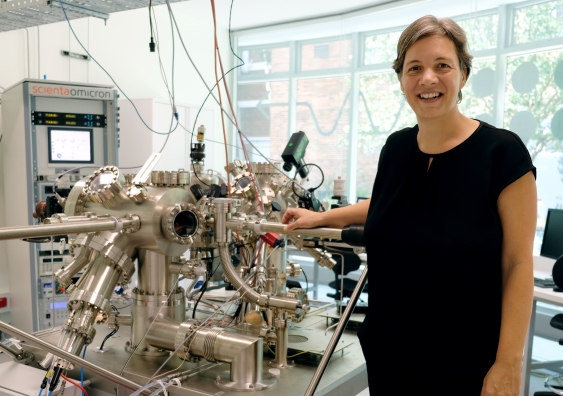UNSW Builds ‘Precision Atom Qubits’ Critical For Silicon-Based Quantum Computers

A team of scientists from the University of South Wales (UNSW) achieved a new major milestone in the building of a silicon-based quantum computer. The team was able to, for the first time, build qubits in silicon out of single phosphorus atoms that are able to communicate and correlate with each other. This achievement will allow the team to build two-qubit logic gates, the building block of a quantum computer. This, in turn, will make building a powerful silicon-based quantum computer possible.
Quantum Entanglement
Quantum entanglement is the phenomena that allows one particle to communicate with and affect the state of another particle. Michelle Simmons, the head of this UNSW project who was also named last year’s "Australian of the Year" for her work in quantum computing, believes that quantum entanglement is crucial to the development of quantum computers.
Her team is now the first to have entangled single atom qubits in silicon, which gives the qubits a high-fidelity rate. According to Simmons, the smaller you can make the qubits, the more accurate the qubit operations will be.
For the study, her team placed two qubits, one made of two phosphorus atoms and the other made of a single phosphorus atom, 16nm apart. According to quantum theory, in order to see entanglement between qubits you need to place them 20nm apart, at most. However, Simmons’ team was able to achieve the entanglement between the two qubits with just the 16nm of space between them.
New Advances Enabling Silicon-Based Quantum Computing
It's a good thing Moore’s Law hasn’t died yet, because silicon-based quantum computers seem to benefit from smaller processes, as Simmons’ team has already shown. The team chose silicon because it’s the most common material for building computer chips, but also because it’s a highly stable environment for qubits.
A joint research project between UNSW and the Indian Institute of Science also showed that quantum electrical circuits could be built with a size between 2-10nm, significantly lowering the electrical noise that could interfere with the states of the qubits.
Simmons noted that:
Stay On the Cutting Edge: Get the Tom's Hardware Newsletter
Get Tom's Hardware's best news and in-depth reviews, straight to your inbox.
Our results confirm that silicon is an optimal choice, because its use avoids the problem most other devices face of having a mix of different materials, including dielectrics and surface metals, that can be the source of, and amplify, electrical noise.With our precision approach we’ve achieved what we believe is the lowest electrical noise level possible for an electronic nano-device in silicon - three orders of magnitude lower than even using carbon nanotubes.
In another recent paper, Simmons’ team showed that their precision qubits in silicon could be engineered to have a record lifetime of 30 seconds, or 16-times longer than previously reported. The longer the lifetime from spin up to spin down of a qubit, the longer the information can be stored in a quantum state.
These long lifetimes allowed the researchers to read out the electron spins of two qubits in sequence with an accuracy of 99.8%, which looks better than 99% readout of Google’s recently announced 72-qubit quantum computer. The UNSW team believes the 99.8% accuracy is required for practical error-correction in a quantum computer.
Commercializing Silicon Quantum Computers
In a previous announcement, UNSW quantum computing researchers said they plan to build a 10-qubit “quantum chip module” at 7nm by 2022 as a demonstration device and a precursor to a more powerful and practical silicon-based quantum computer.
Last year, Australia’s first quantum computing company, called Silicon Quantum Computing Pty Ltd, was created with investment from the Australian government, the UNSW, and other companies. The company’s aim is to make silicon quantum computers a reality.
The Australian government believes that 40% of its economy could be impacted by quantum computing in the future, as possible applications include: software design, machine learning, scheduling and logistical planning, financial analysis, stock market modelling, software and hardware verification, climate modelling, rapid drug design and testing, and early disease detection and prevention.

